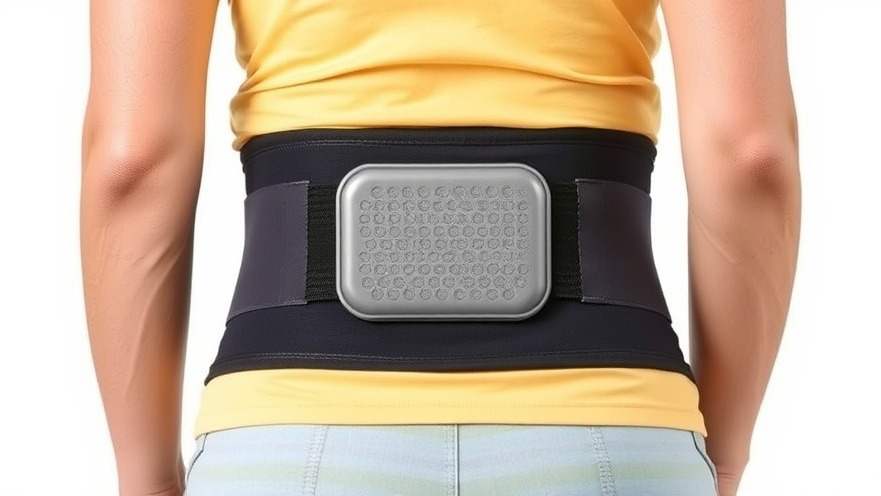
Revolutionizing Bone Health: The Osteoboost Solution
In a landmark development for bone health, Osteoboost Health has introduced the first FDA-cleared prescription wearable device aimed specifically at combating low bone density. This groundbreaking technology is not just another gadget; it's a pivotal intervention for millions suffering from ailment-related mobility issues, particularly among postmenopausal women. By targeting vulnerable areas like the spine and hips, Osteoboost promises to significantly reduce the risk of fractures that can severely impact independence and quality of life.
A New Approach to an Old Problem
Historically, options for patients with low bone density have been limited to medications prescribed at the osteoporosis stage—typically after a fracture has already occurred. What's particularly striking about Osteoboost is its focus on osteopenia, an often-overlooked stage where over 54% of postmenopausal women in the United States are affected. The device aims to intervene early in the bone density decline, with the potential to alter the trajectory of bone health and prevent further complications.
The Technology Behind Osteoboost
The device employs patented vibration technology, a method validated through rigorous randomized controlled trials. The clinical study conducted at the University of Nebraska Medical Center showcased an impressive efficacy rate, reporting an 85% reduction in spine bone density loss and a 55% reduction in hip bone density loss among users. With an emphasis on safety, the trial revealed over 80% compliance rates without serious adverse events, underscoring the device's usability and patient satisfaction.
Beyond Gimmicks: Why This Matters
For concierge health practitioners, the rollout of Osteoboost represents not only a new treatment option but also an opportunity to educate patients about proactive health measures. CEO Laura Yecies emphasizes that while discussions around longevity often omit bone health, maintaining strong bones is vital for aging confidently. Integrating Osteoboost into patient care could position practices as leaders in a growing market that prioritizes preventative measures.
The Intersection of Health and Technology
The launch of Osteoboost coincides with increasing consumer demand for at-home solutions that blend health monitoring with technological innovation. Patients can now engage in treatment sessions during daily activities such as cooking or walking, making health maintenance more accessible than ever. The partnership with Beluga Health for online prescription consultations furthers this notion, ensuring that technology serves to enhance, rather than complicate, patient care.
What This Means for Your Practice
With the introduction of such technologies, concierge health practitioners face both challenges and opportunities. Navigating the tech landscape can be overwhelming, yet integrating groundbreaking tools like Osteoboost could position practices competitively in their communities. By providing advanced treatment options, practices can demonstrate their commitment to patient wellness, facilitating trust and loyalty.
Action Steps for Practitioners
As a concierge health practitioner, consider how you can incorporate Osteoboost into your practice. Stay informed about the device and its clinical benefits, engage with patients on the importance of preventive measures for bone health, and utilize associated technology to streamline access for patients. Looking ahead, the conversation about health innovation is only just beginning. Embrace this shift by making informed decisions that strengthen your practice's reputation and service offerings.
Osteoboost is not merely a product; it represents a paradigm shift in how we approach bone health. By focusing on preventive care and empowering patients, health practitioners can lead the charge toward longer, healthier, and more active lives.
 Add Row
Add Row  Add
Add 




Write A Comment